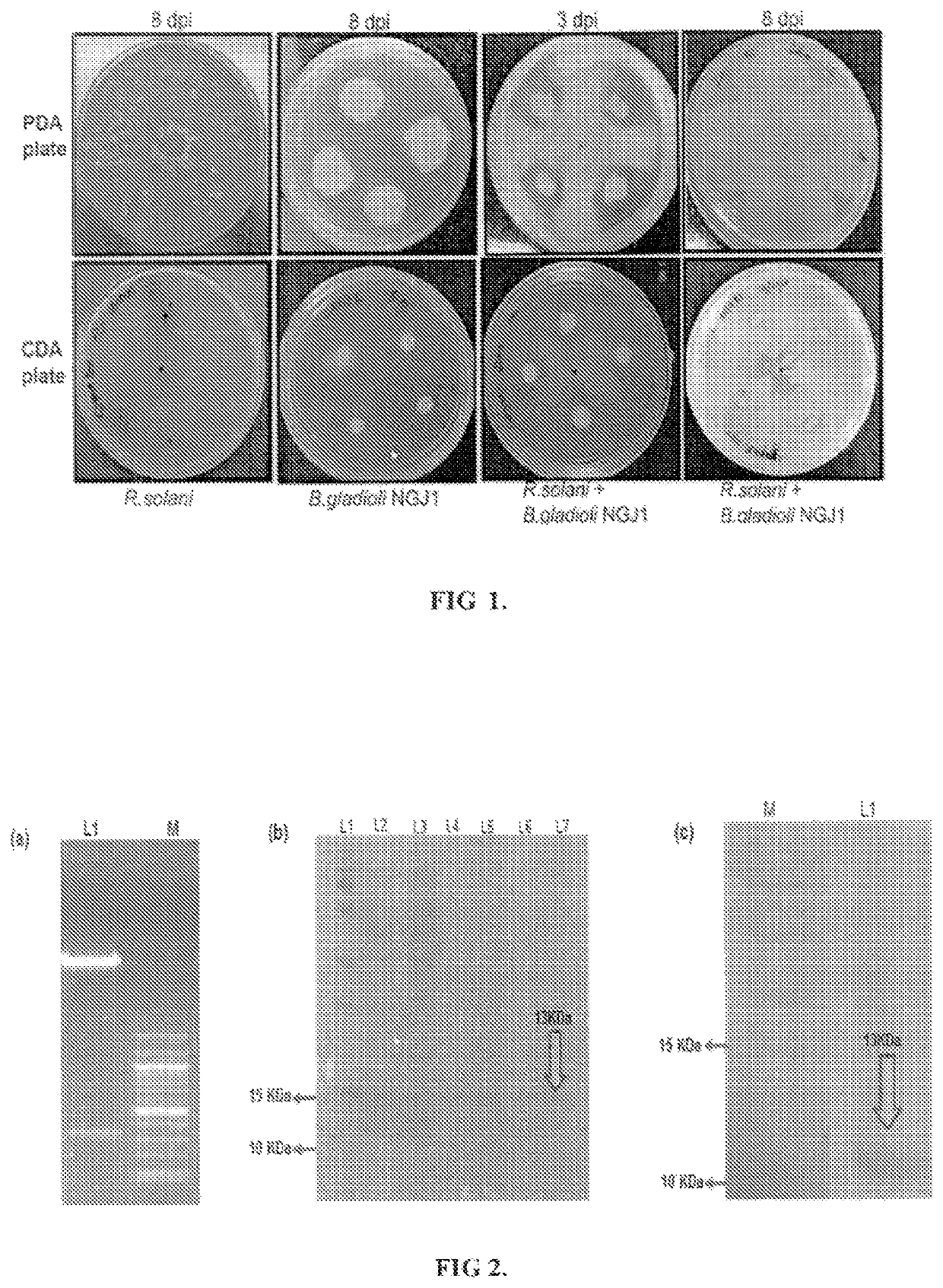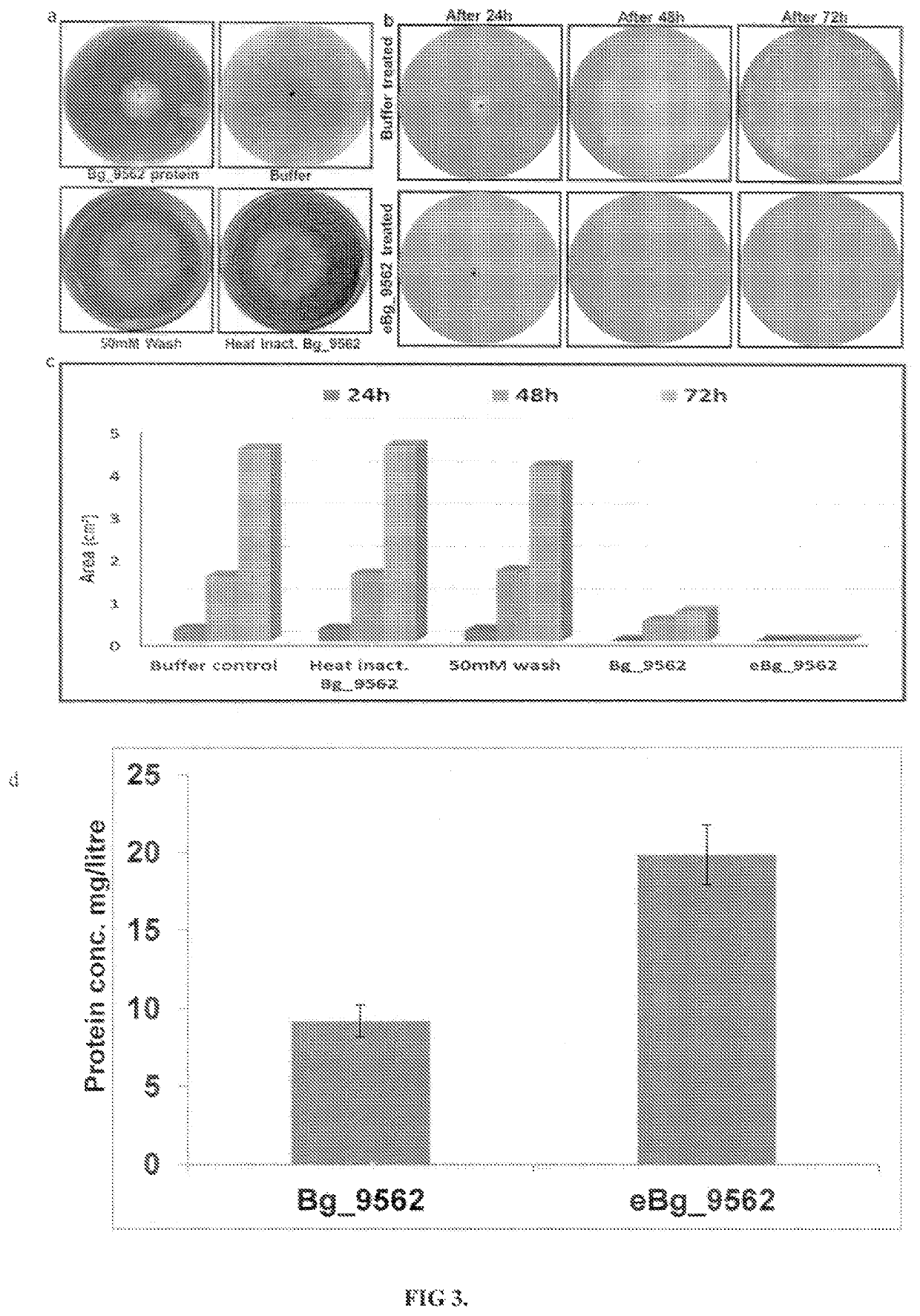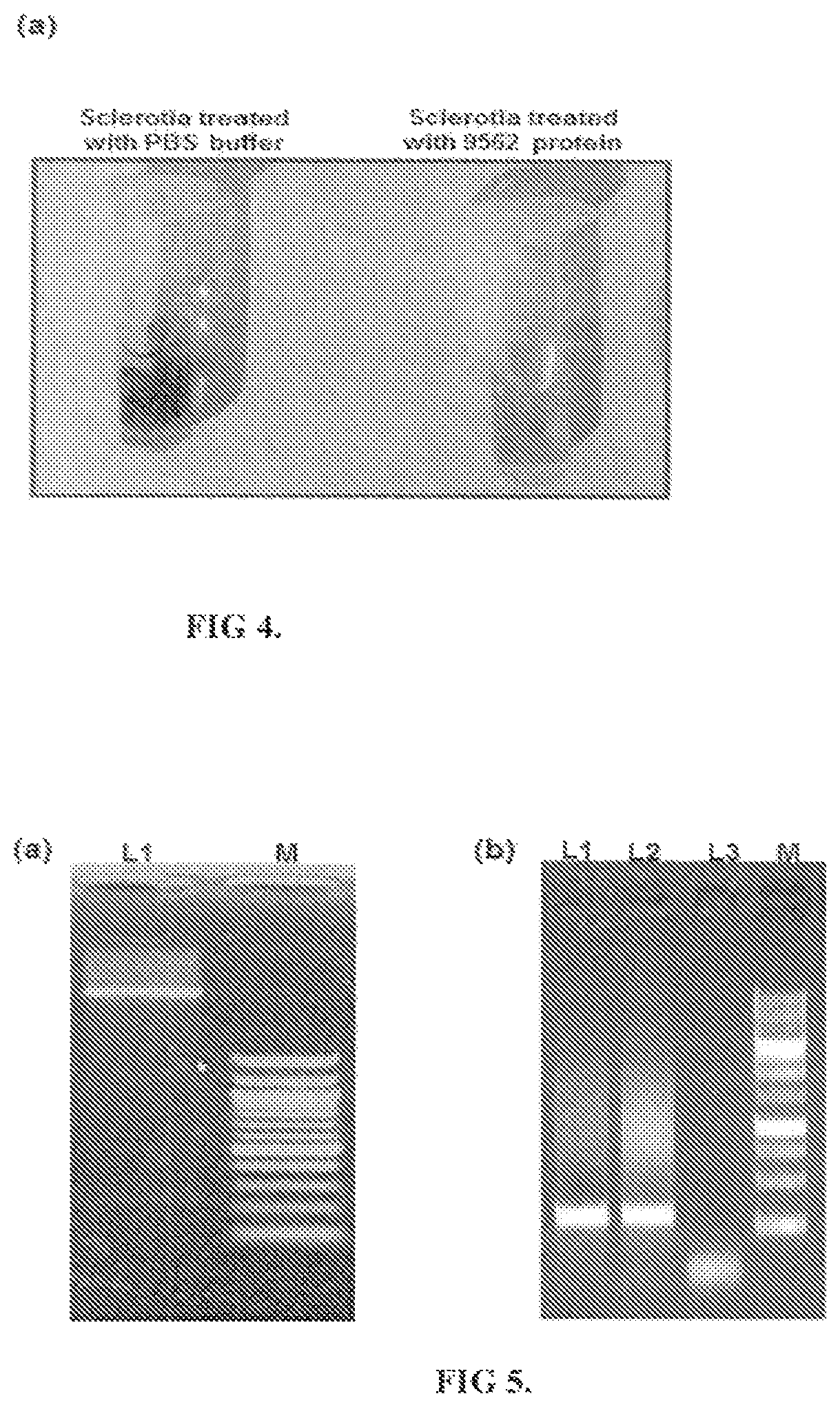Protein against fungal pathogens
a fungal pathogen and protein technology, applied in the field of new protein against fungal pathogens, can solve the problems of limited use of them directly, no source of complete disease resistance for sheath blight disease of rice, no proper control measures are developed for i>, etc., and achieves the effect of high mass production of proteins
- Summary
- Abstract
- Description
- Claims
- Application Information
AI Technical Summary
Benefits of technology
Problems solved by technology
Method used
Image
Examples
example 2
ssion and Purification of Potential Antifungal Protein
[0070]The complete CDS of Bg_9562 gene (333 bp) was PCR amplified from B. gladioli strain NGJ1 genomic DNA using gene specific forward primer having SEQ ID No. 3 and reverse primer having SEQ ID No. 4 as disclosed in Table 2 and further cloned into pET28a bacterial expression vector (Novagen / Merck Life Science Private Limited) to obtain pET28a-9562 (as shown in FIG. 2a). The restriction sites of NdeI and HindIII had been added in the forward and reverse primer sequences, respectively.
[0071]Upon sequence validation, the pET28a-9562 was transformed into E. coli (BL21 strain, DE3-codon+) for recombinant protein production. The protein was purified using Ni2+-NTA-Agarose chromatography and was resolved on SDS PAGE (as shown in FIG. 2b). Further it was electro-blotted onto polyvinylidene fluoride (PVDF) membrane and probed with mouse polyclonal antibodies (1:1000 dilutions) raised against anti-His-antibody. The presence of ˜13 KDa ban...
example 3
Antifungal Activity of the Purified Protein
[0073]Antifungal activity of protein having SEQ ID No.2 was assayed by treating Rhizoctonia solani strain BRS1 sclerotia with different concentrations (5, 10 and 15 μg / ml) of purified protein. As control, the sclerotia were treated with three different solutions 10 mM Phosphate buffer saline (PBS) pH 7.4, 50 mM wash (one component used in protein elusion) and heat inactivated Bg_9562 protein (by incubating in boiling water for 40 min). After treatment, sclerotia were placed on the PDA (Himedia, India) plates and incubated at 28° C. for further growth. Result (as shown in FIG. 3a) summarizes that 15 μg / ml of the protein was efficient in preventing the growth of R. solani, while proper fungal growth was observed in case of different controls. Fungal growth inhibition upon eBg_9562 protein treatment is summarized in FIG. 3b. The eBg_9562 treated sclerotia failed to grow while the control sclerotia showed proper growth. Further, upon different ...
example 4
ing the Role of the Antifungal Protein Through Reverse Genetics Approach
[0077]In order to demonstrate that the SEQ ID No. 2 protein is indeed involved in antifungal and mycophagous behaviors of B. gladioli strain NGJ1, we adopted reverse genetics approach. For this the pGD1 plasmid was obtained by cloning 209 bp of the wild type Bg_9562 gene using a Forward primer having SEQ ID No. 5 and reverse primer having SEQ ID No. 6 as disclosed in Table 1 into pK18 mob vector (Schäfer A et al, 1994). The pGD1 was mobilized into B. gladioli strain NGJ1 by using published protocol (Schäfer A et al, 1990) and the selection of 49562 insertion mutants (NGJ100 and NGJ101) were performed on kanamycin (50 μg / μ1) containing PDA plates. The 49562 insertion mutant bacterium was confirmed through PCR and sequencing (as shown in FIG. 5a &5b).
[0078]Further for complementation, full lengths of the gene was amplified from NGJ1 genome by using forward primer having SEQ ID No. 7 and reverse primer having SEQ I...
PUM
| Property | Measurement | Unit |
|---|---|---|
| concentrations | aaaaa | aaaaa |
| concentrations | aaaaa | aaaaa |
| concentrations | aaaaa | aaaaa |
Abstract
Description
Claims
Application Information
 Login to View More
Login to View More - R&D
- Intellectual Property
- Life Sciences
- Materials
- Tech Scout
- Unparalleled Data Quality
- Higher Quality Content
- 60% Fewer Hallucinations
Browse by: Latest US Patents, China's latest patents, Technical Efficacy Thesaurus, Application Domain, Technology Topic, Popular Technical Reports.
© 2025 PatSnap. All rights reserved.Legal|Privacy policy|Modern Slavery Act Transparency Statement|Sitemap|About US| Contact US: help@patsnap.com



